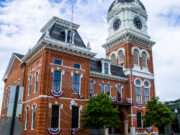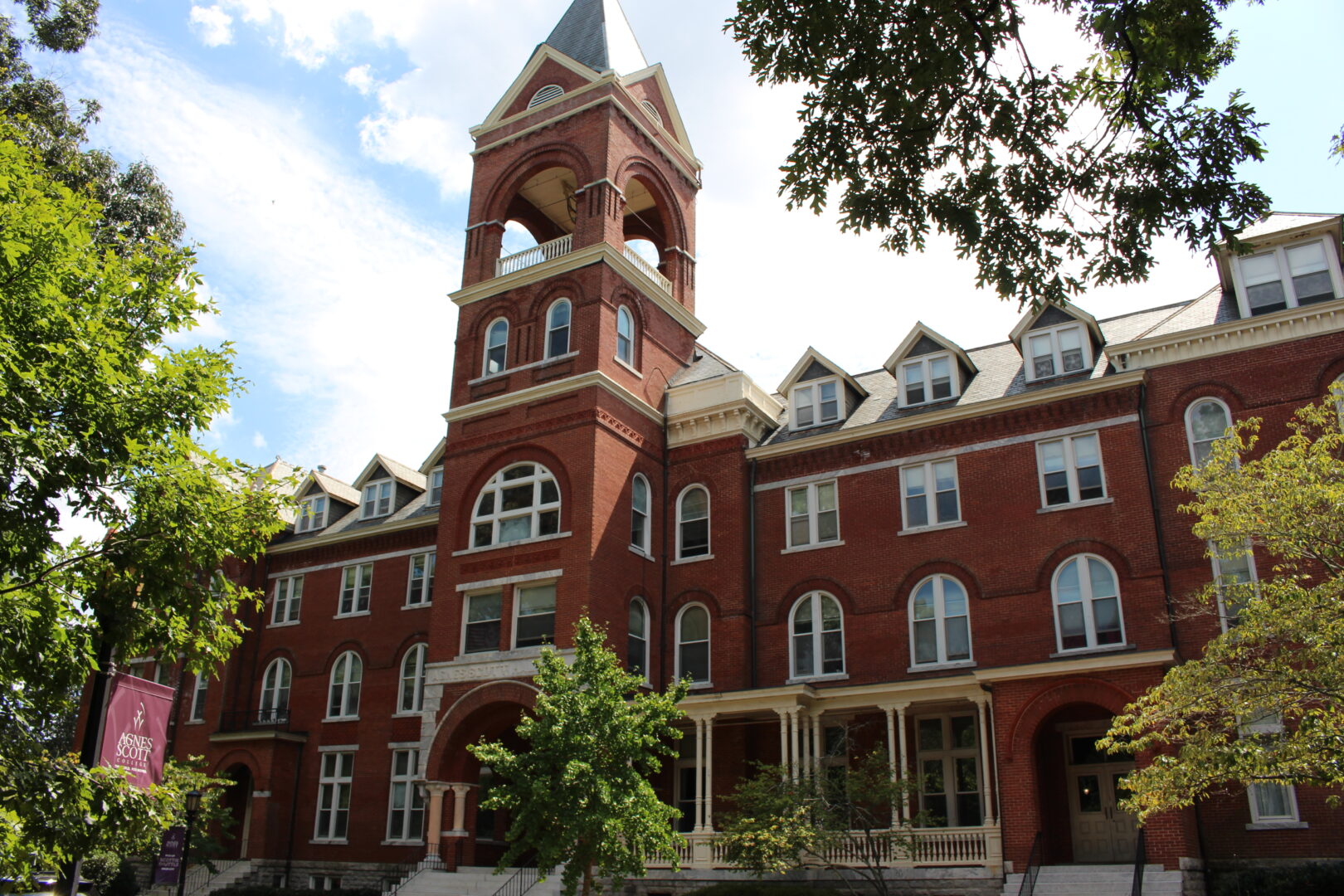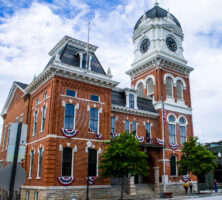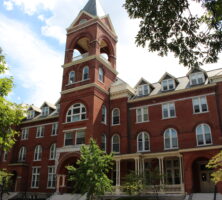Alexander Bruce (1835-1927) and Thomas Henry Morgan (1857-1940) formed the successor firm to the highly successful Parkins and Bruce in Atlanta in 1882. Much like its predecessor, Bruce and Morgan (1882-1904) was the most successful architectural business in Georgia. Its multistate practice was based, in part, on a new concept of specialization. The two partners also led the way in promoting professionalization in their field.
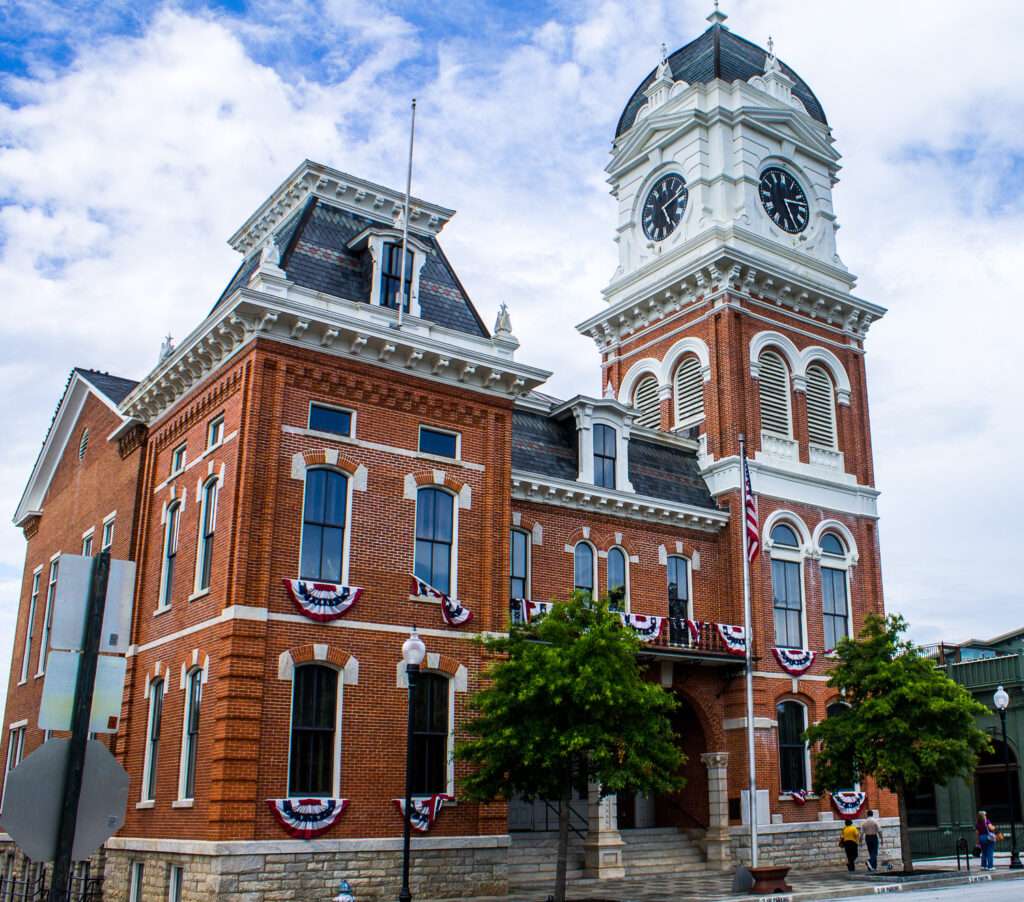
Courtesy of Don Bowman
Although the firm designed all types of structures from a small “baby” cottage at the Methodist Orphanage in Decatur (1899) to the massive Queen Anne style Wigwam Hotel in Indian Springs (1890), it specialized in large civic or education buildings in its early years. An early advertisement for the firm stated, “We make a specialty of planning Court-Houses, Colleges, Churches, Opera Houses, Libraries, and all public buildings.” Most of these were picturesque in nature, often combining elements of the Romanesque revival, Queen Anne, Second Empire, and even Gothic revival. The 1883 Walton County Courthouse, for example, has a Second Empire Mansard roof, Italianate style eaves and brackets, Romanesque arches, Eastlake turned posts on a one-story porch, and an almost classical symmetry.
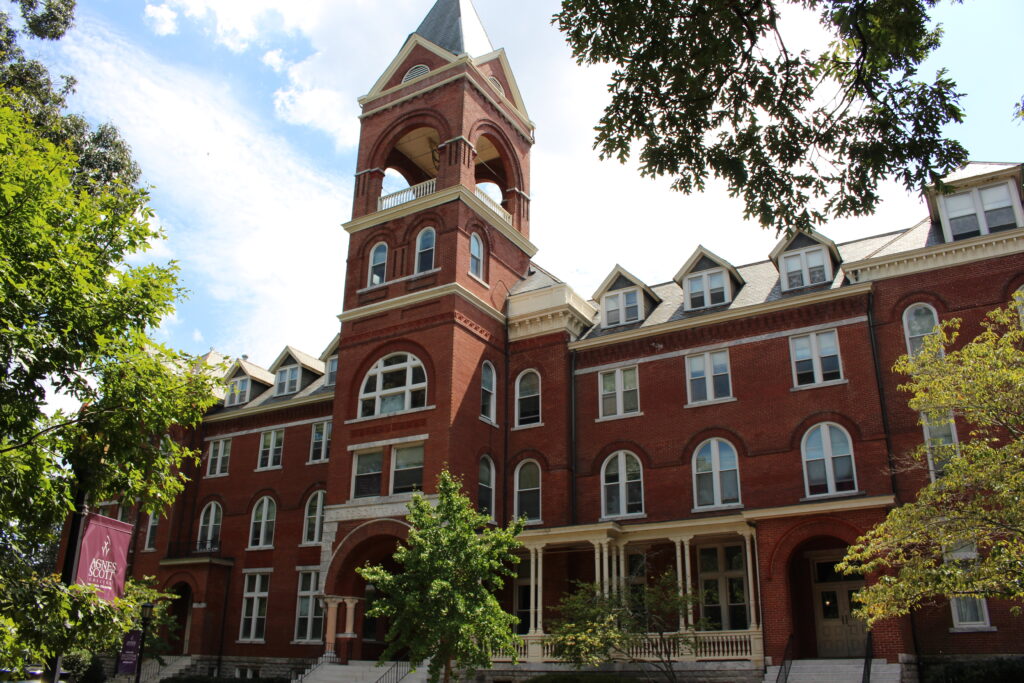
Image from Atcharles
A second area of specialization was the design of public schools and colleges across several southern states. These were usually symmetrical in plan with great bell towers, terra-cotta decorations, and an array of Romanesque arches. Excellent examples are the Administration Building for the Georgia Institute of Technology (1888) in Atlanta and the main building for Agnes Scott College (1889) in Decatur.
After 1895, however, Morgan led the way as a noted designer of steel-frame skyscrapers, especially in Atlanta. As one writer commented, “Atlanta is largely an office building city, and it was [Thomas Henry] Morgan who shaped its character.” Notable skyscrapers by the firm before Bruce’s retirement in 1904 were the Grant Building (1898), W. W. Austell Building (1898), Century Building (1902), and Fourth National Bank Building (1904). Morgan continued as a major regional architect, with other partners, until 1930.
Finally, both Alexander Bruce (one of the first fellows of the American Institute of Architects to practice in Georgia) and Thomas Henry Morgan played a major role in the early efforts to professionalize architecture in Georgia. Both served as president of the ill-fated Southern Chapter of the AIA (established 1891), and Morgan later became the first president of the 1906 Atlanta Chapter. For several years, Morgan also served as editor of the Atlanta-based Southern Architect, a champion of architectural professionalization in the state and region.


